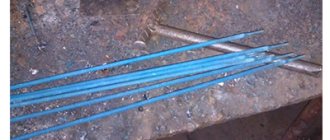The shelf life of an apple depends on the shelf life of the fruit - the ability to maintain its appearance and nutritional value for a long time. Moreover, the keeping quality itself depends not only on the variety, but also on the integrity of the skin and pulp of the apple. Broken fruits begin to deteriorate literally on the day they are stored; therefore, when setting up an apple storage system, it is necessary to take care not only of sorting the fruits, but also of reliable containers that ensure the safety of the product during the process of loading and unloading the warehouse.
What varieties of apples store best?
It starts with choosing the right variety. No matter how hard we try, tender summer apples, even in ideal conditions, will not last long - they will quickly become wadded, dry and tasteless. For example, the maximum possible shelf life of the fruits of the beloved White filling variety is 2-3 weeks.
But even in late (autumn and winter) varieties, keeping quality varies. For example, the popular Antonovka ordinary is stored only until the New Year. Under the most favorable circumstances, apples will still be suitable for eating in January, but you will no longer find their former juiciness. But by this time the Northern Synapse is just ripening in storage. Its fruits, in suitable conditions, can last until the end of spring.
TOOLS FOR HOME AND GARDEN, HANDCRAFTS, ETC. PRICES VERY LOW
Thus, if, despite all your efforts, your apples last no longer than 1.5 - 2 months, perhaps the reason lies in the keeping quality of a particular variety.
Important conditions for storing apple harvests
Often, gardeners, trying to extend the life of fresh fruits, invent very extravagant methods (for example, keeping apples under an ultraviolet lamp or sealing them in bags filled with carbon dioxide). Meanwhile, fruits of the right variety in suitable conditions can, without any tricks, safely last the entire period allotted to them by nature. Therefore, it is the conditions (and not at all the tricks of laying or processing the crop) that should be taken care of first.
The most important factors are temperature and humidity. In a warm, dry room, apples will quickly wilt. If the fruits are frozen, they will spoil immediately after thawing. The optimal temperature for storage is ... + 4°C and humidity at 85 - 95%. Where can you find such conditions? For example, in a city apartment it could be a refrigerator (which, unfortunately, won’t fit many apples) or an insulated box on a closed loggia. But, of course, the best thing is a cellar or basement that does not freeze even in severe frosts.
Is it possible to store apples together with other vegetables and fruits?
Gardeners' opinions on this matter are divided: some believe that this is acceptable, others argue that the mutual influence will be negative. In fact, if the apples are in a separate container, there are usually no problems. But it’s worth keeping in mind: requirements for storage conditions for fruits and vegetables may vary. That is, the point is not so much the incompatibility of apples with other dacha gifts, but rather the discrepancy between their needs.
It is also very important to remove the fruits from the tree correctly and on time: unripe and overripe apples damaged during harvesting will not be stored for long. However, there is a little trick: if the damage is minor (for example, you accidentally touched an apple and it fell from a branch into the grass, but its skin is not broken), the fruits can be put aside for a while, and then primarily used for food. In favorable conditions and with regular monitoring, fruits with minor damage can be stored for up to a month, and maybe longer.
How to choose equipment for creating a WGS?
An insulated frameless hangar can be turned into a fruit storage facility if you install sealed gates, a nitrogen generator, equipment for removing excess carbon dioxide and oxygen, and an ethylene adsorber. It is necessary to equip the chamber with sensors, a cooling system and air humidification/dehumidification.
Three types of equipment for regulating the gas environment are common:
- CA (controlled atmosphere). The simplest option for equipping an RGS camera. Here oxygen is maintained at a level of 2.5...4%, CO2 - 3...5%;
- ULO (ultra-low oxygen). Oxygen 1…2.5%, carbon dioxide adsorber and nitrogen generator installed;
- DCA (Dynamic Controlled Atmosphere). The most effective, but expensive camera equipment. A control system is provided to maintain a minimum oxygen concentration. The composition of the atmosphere changes as quickly and accurately as possible.
The equipment is selected based on the volume of fruit storage and the specifics of the varieties. Pay attention to the energy consumption class. The higher it is, the more economically energy will be consumed. The installation method and ease of control are taken into account.
At the initial stage of doing business, you can build a sealed chamber, equipping it only with ventilation. And over time, purchase the necessary equipment to maintain an optimal atmosphere.
Methods for storing apples
As already mentioned, if the variety is chosen correctly and the conditions are close to optimal, the apples will be perfectly stored without any tricks. It is enough to carefully place dry, clean, undamaged fruits in rows in baskets or boxes and put the filled containers in storage. This is the easiest option, but still gives good results.
It is believed that one rotten apple can spoil all neighboring ones, so the fruits should not touch. In fact, this does not always happen. In winter, you can find a completely blackened fruit in a box among healthy apples without the slightest sign of rot. But, of course, it won’t be any worse if you carefully wrap each fruit in a paper napkin before putting it in the box. It's just a rather labor-intensive task.
You can solve the problem faster and easier if you use wood shavings or sawdust: they are poured onto the bottom of the container in which the apples are placed, and then sprinkled over each layer of fruit, creating a loose, airy layer. The effect is the same as when wrapping fruits with paper, but much less labor will have to be spent.
If the storage is too dry, the fruits can be sprinkled with washed and dried sand (pure or mixed with ash - to prevent various rots). This method will help reduce moisture evaporation, and the apples will remain juicy and elastic longer. It is better not to use this method for wet rooms: the sand backfill is quite dense, the fruits are poorly ventilated, and if the sand becomes damp, they will begin to rot.
Apples are well preserved when packed in regular plastic bags. And it’s convenient to get: you don’t need to select fruits individually, you just need to take care of the portion packaging right away. But when choosing this option, keep in mind: there should be no sudden temperature changes in the storage facility, which can cause condensation to form. Excess moisture will cause the fruits to deteriorate. If the room temperature is above + 4 °C, it is also better to refuse such packaging.
Three components of long-term storage
It turns out that preparing apples for storage is not such a simple thing. This only seems to be the case at first glance: carefully put the beautiful fruits in a box - and the job is done. Not so! In order for apples to delight you with their freshness and “marketable appearance” all winter and spring, you need to know three secrets.
Secret 1: choose a variety suitable for storage
How long apples will be stored depends directly on their variety. Not everyone has the ability to retain food and nutritional properties for a long time (which, in fact, is called keeping quality).
For the middle zone these are: Antonovka ordinary, Bogatyr, Vityaz, Northern Sinap, Zhigulevskoe, Mayak, Orlovskoe winter, Izbornitsa, Cortland, Bananovoe, Melba and Welsey. For the southern regions: Jonathan, Aurora Crimean, Renet Simirenko, Starking and Olympic.
Storage duration depends on the variety:
- summer apples are stored for 2-4 weeks at a temperature of 2-8 degrees;
- autumn varieties - 1-2 months at a temperature of 0-8 degrees;
- winter varieties (Renet Simirenko, Babushkino, Rozmarin, Calville snowy, Bellefleur) are stored for 4–7 months at + 5 degrees.
Secret 2: correctly remove apples from the tree
If you are planning to store apples in their natural form, then from the moment of picking you need to start acting according to the rules, because their “further life” largely depends on how you do this.
- You need to pick the fruits at the moment of removable ripeness (when healthy ripe apples have just begun to fall - 5-6 pieces per day);
- remove fruits only in dry weather;
- do not tear off the stalk;
- do not wipe off the natural waxy coating (matte film);
- Do not throw away the picked apples , but carefully place them in prepared containers;
- In order not to injure the fruits when picking, you need to start from the lower branches , moving to the upper ones.
Secret 3. Be sure to sort the apples
Some inexperienced gardeners, having removed apples from the tree directly into boxes, immediately send them to the cellar “for the winter.” And they make a mistake. Before sorting, it is really better to keep the apples for 2-3 weeks in a cool room so that signs of possible defects appear.
But then you need to do the following:
- select for storage only healthy fruits without mechanical damage, preferably with stalks;
- to separate apples of different varieties for storage;
- It is better to sort the fruits by size : separately large, medium and small;
- There is no need to wash or wipe the apples!
"Above" or "under" the ground?
Depending on the arrangement options, there are:
- Ground vegetable storage. Such a structure can be erected quite quickly. But there are also significant disadvantages: it is difficult to do it yourself (the help of knowledgeable workers is required), and the financial costs are enormous. Here it is worth carefully approaching the problem of organizing climatic conditions suitable for conservation.
- Underground vegetable storage. This solution is quite popular among people involved in gardening and gardening. The room initially has good thermal insulation characteristics and very little effort is needed to ensure a suitable environment in the cellar. The only negative is that if there is groundwater, it will not be possible to equip the premises too close.
Methods for storing apples
There are several ways to store apples at home:
- on the racks. It would be better if these were racks with drawers to make it easier to inspect the fruits and take them out for eating. On such racks, apples are stacked in 1 row and, preferably, so that they do not touch each other;
- in wooden boxes. If you stack the boxes one on top of the other, do not overfill them with fruits, otherwise the top box will take in the apples of the bottom one and they will begin to spoil. Fruits must be placed in boxes very carefully to avoid wounds and dents. Remember that apples can also be injured by the stem. At the same time, the stalk cannot be cut off. It is better to transfer the apples by hand, especially since you will still be sorting and calibrating them;
- in wooden containers. If you eat a lot of apples, you can store them in containers. But it seems to me that this is not very convenient, since the upper fruits will put very much pressure on the lower ones and, accordingly, they will begin to deteriorate;
- in cardboard boxes. It is advisable to seal such boxes with tape to avoid them breaking at the most inopportune moment. The principle of folding is the same as in wooden boxes. We recommend attaching a label to the boxes or shelves with information about the variety and date of storage. You can also indicate the size of the apples if you have them wrapped or sprinkled with something;
- in sawdust . Sawdust must be from hardwood. As a rule, it is recommended to use pine shavings for storing vegetables. But apples, as mentioned above, are capable of absorbing foreign odors;
- in sand . Sand for these purposes should be taken almost dry; it should first be sifted and calcined for disinfection. Sand is poured into a 10 cm layer at the bottom of the box, and the first layer of apples is laid. There should be small gaps between the fruits. After this, the first layer is completely covered with sand and the second is laid on top. This storage method, like the previous two, is good for small harvest volumes;
- in plastic bags . For this method we will need small plastic bags. Apples are packaged in 1–2 kilograms. The bags are tied and placed on racks for storage.
Making a plant box
Step 1. First of all, you need to decide on the dimensions of the box being constructed. It is important to choose the place where it will stand. Based on this, you should sketch out a drawing of the box indicating the dimensional parameters and calculate how much material is required.
First you need to decide on the sizes
Step 2. Next, you need to go to the store and purchase everything you need. First of all, you need to buy the required amount of boards.
Buy boards in the required quantity
Step 3. Now you need to apply the appropriate markings to the board - mark the sides and ends of the box on it. It is better to take measurements with a tape measure, but to get even marks it is better to use a square.
Marking
Step 4. Next you need to assemble the box frame and drill holes in its sides. It is better to make several holes on each side.
Assembling the drawer box
Step 5. The boards on the sides of the box need to be connected together using self-tapping screws. You can also use nails, but connections with self-tapping screws are much stronger and of better quality.
Self-tapping screws are used for connection
Step 6. Next, you need to determine the size of the bottom of the box and cut the bottom itself from the board. It needs to be secured by drilling wooden holes and screwing screws along the bottom border of the box around the entire perimeter.
Attaching the drawer bottom
Step 7: It is important to be sure to drill a few drainage holes in the bottom of the plant box. They will ensure the drainage of excess water that will enter the soil during irrigation or rain.
Drainage holes are drilled
Step 8. It is important to sand all surfaces of the drawer so that they are smooth, pleasant to the touch and safe.
Sanding the drawer
Step 9. Finally, the box can be painted, but it is better to coat it with varnish. This will make the box beautiful and additionally protect it from moisture.
Finished product painting
Video - Making a simple box
As for the best way to put apples in boxes...
There is no clear solution here. Some sources recommend laying the stalk up, while others, on the contrary, place it down. The main thing is just careful styling.
You can lay the fruits in even rows (when the fruits are located one above the other), as well as in a checkerboard pattern or diagonally. When laying in a checkerboard pattern, damage to the fruit by the stalk can be avoided.
Ideal for storage when the fruits do not touch each other. This is easiest to organize with rack storage. You can also try to organize this in drawers, but then you need to use some kind of spacers between the rows. There are special cardboard spacers with recesses for the fruit, but I don’t know if they can be purchased somewhere here. Do I need to wrap the fruits with something or sprinkle them? Well, you can pour them over and wrap them, but this is probably not always necessary, convenient or practical. It’s one thing if you have several tens of kilograms of apples, another thing if you have several hundred.
Storing apples is not a difficult job. Everyone is looking for vitamins in winter
Our tips on how to store apples in winter will be useful to many gardeners and summer residents. After all, this year can be called an apple year. The harvest was huge. We made compotes, prepared dried goods, stocked the shelves with jam, marmalade, and marshmallows. But fresh fruits cannot be compared with prepared ones. Therefore, I would really like to preserve the aromatic vitamins longer.
Storing apples in polyethylene
For this purpose, use cling film, or small bags, or large plastic bags.
- Cling film is placed on the bottom of the box in two layers crosswise so that the edges hang down. Carefully fill the box with apples, and then close the top with the edges of the film, like an envelope.
- The apples, without any packaging, are taken out into a cool room for a couple of hours, after which each is placed in an individual plastic bag and tied tightly. Then the bags of apples are placed in any convenient container and taken out to the balcony.
- The apples are placed in a thick plastic bag, and a piece of cotton wool soaked in alcohol or vinegar is also placed there. The bag is tied so that air does not penetrate inside.
All methods of storing apples in bags are based on the principle of effective concentration of carbon dioxide. Since apples remain “alive” for a long time, that is, they breathe and emit carbon dioxide, after some time the optimal concentration of carbon dioxide is established in the hermetically sealed bag, which allows the metabolic processes in the fruit to slow down, thereby increasing their shelf life. By the way, apples packed in plastic can then be placed in a large travel suitcase, closed and placed in a cool place.
Processing apples before storage
There are several options for treating the surface of apples before storing them for long-term storage, but they are not suitable for everyone. Because they involve smearing, dipping, soaking and even irradiating apples with ultraviolet light. Not every gardener will decide on such experiments, but... what if there are brave souls?
- Before placing in prepared containers, apples are greased with glycerin.
- Each apple is dipped into an alcohol solution of propolis for a couple of seconds (100 grams of propolis per 0.5 liter of alcohol) and then dried.
- Apples are kept for a minute in a 2% solution of calcium chloride (sold in pharmacies).
- Before storage, each apple can be dipped in a 5% salicylic acid solution.
- Apples are immersed in melted paraffin or beeswax, and after drying, they are stored in boxes with sawdust.
- To prevent putrefactive diseases, apples laid out in one layer should be kept under a bactericidal ultraviolet lamp at a distance of 1.5 meters for half an hour. Then turn it over and irradiate the other side.
Construction of a fruit storage facility
Often, arched frameless hangars with a shallow foundation are built for fruit storage. They are almost 2 times cheaper than capital frame structures.
The hangar is made of thin sheet profiled metal, bent into an arc. The arches are secured to the foundation with anchor bolts or welding. Install end walls. The premises will be equipped with gates and a ventilation system. This method of construction has been known since 1949. Some self-supporting structures built 50 years ago are still standing. For the strength of the building, it is important to follow the technology of production and installation of arches and use high-quality building materials.
General rules for storing apples in the refrigerator
It is quite convenient to store apples in the refrigerator if you have a large one and have quite a few compartments.
In addition, there are general rules for storing apples in the refrigerator, which include:
- Apples should be refrigerated no later than 24 hours after harvesting. If you purchased apples at the store, you should immediately put them in the refrigerator.
- Under no circumstances should you wash apples before storing.
- For comfortable and isolated storage, apples should be packed in plastic wrap, 1 to 5 kilograms in one bag. Each bag must have holes so that the apples can breathe; if this is not done, the apples will rot.
- You should only pack apples of one variety in one bag; under no circumstances should you mix apples of different varieties and ripening periods.
- You can put apples in special trays or small boxes. This way they are preserved very well.
- Apples are best preserved in the coldest compartments of the refrigerator, where the temperature is 1 - 3 degrees with an optimal air humidity of 85-90%.
- If you are going to store apples for a long time, then before storing them you need to do heat treatment at temperatures up to 30 degrees for 3-4 days. This is done in order to remove ethylene from apple tissue. This way, apples will be stored better and will not emit dangerous ethylene.
Ventilation system
Ventilation issues in any cellar are among the most important. Above-ground vegetable storage also needs high-quality ventilation.
- First you need to install a ventilation pipe under the door.
- The hood is made of two pipes, one of them will be installed on the back wall, passing through the roof and ceiling, and the second needs to be mounted on the roof. Hoods can be made of any material - asbestos cement or plastic. During severe frosts in winter, it is best to cover the hoods with straw so that the heat does not escape from the cellar. Ventilation in the cellar can also be forced. If you have some experience, doing it yourself is quite simple.
The door to the vegetable storage room must be insulated, like the rest of the room. To do this, you can use foam boards or felt; it is recommended to lay a layer of plywood on the insulation for protection. You can make the door yourself or buy it in a store.
The inside of the cellar can be equipped as the owner wishes: shelving, drawers, boxes, etc. The interior of the room does not need additional insulation. However, if your area experiences severe frosts in winter, then you can play it safe and insulate the room from the inside with your own hands using an additional layer of polystyrene foam or mineral wool. You should also not overdo it with thermal insulation material - these are extra costs that will not lead to anything better.
Roofing felt laid on the walls with your own hands will perfectly protect the room from moisture penetration. In addition, due to the above-ground location of the vegetable storage facility, it will not be at all afraid of floods, groundwater, or high water. At the same time, it is recommended to make the simplest drainage system with your own hands, which will remove moisture away from the base and walls of the cellar.
To the point
Goodies from Sofia Tolstoy, wife of Leo Tolstoy
A book of recipes from the family of a Russian writer is very popular on the Internet. His wife Sophia ran the household zealously, but the table was always rich and satisfying. A vegetarian, Tolstoy still loved tasty things. Here are a few recipes for apples, of which there were many ripening apples at the Tolstoy estate.
- Apple scones . Cut 10 Antonov apples into pieces and simmer them in a saucepan until they become soft. Then rub them through a sieve. Put the pureed apples back into the pan and add one pound of sugar (410 grams) there, add the zest cut into thin pieces and stir it all with a spatula until it comes away from the pan. Place on an iron sheet (now you can use a Teflon sheet so that it does not stick to the baking sheet) and spread evenly to half a finger thickness. Cool and cut into flat cakes.
- Apple cream . 2 cups baked apples, 2 cups sugar, 1 egg. Spoon of gelatin. Vanilla – 1 piece. Take two glasses of baked mashed Antonov apples, two cups of fine sugar and beat one egg white thoroughly. Boil gelatin and add a piece of vanilla. Beat all this into apples with sugar and pour into molds.
- Pastila Tolstoy . Bake ½ measure of apples (about 10 kg) on a sheet, rub through a sieve, and place on ice. The next day, add 2 ½ pounds of sugar (1.1 kg) and 10 whites, which first “beat with a paddle in a tub until the whole mass turns white and rises” - that is, beat the whites with sugar, and then mix with mashed baked apples until smooth. Place in paper boxes (i.e. molds) and place on sheets in the oven until ready. You can bake in layers.
Video
In an adult fruit-bearing garden of a collective partnership, the harvest of fruits and berries in some years reaches 350-400 kg, and vegetables and potatoes - 200-250 kg. Preserving fresh autumn and winter varieties of apples, pears, rowan fruits, Japanese quince, a wide variety of root vegetables, pumpkin, cabbage plants, potatoes, as well as home canning, pickling and soaking products is impossible without the availability of appropriate storage facilities. They can be both individual and collective. It is advisable to build the latter in places with close groundwater levels.
In the Moscow region, many gardening groups have collective fruit and vegetable storage facilities.
For a fruit and vegetable storage facility, choose a site with a slope, due to which all the walls of the future storage facility will be covered with soil. As a rule, it is located near the main entrance to the gardening community and the caretaker’s house, a road is laid, and electricity is supplied.
The collective fruit and vegetable storage facility is shown in the pictures.
Plan of a collective fruit storage facility: side view.
Plan of a collective fruit storage facility: cross-section (with vestibule).
Plan of a collective fruit storage facility: longitudinal section.
Its volume is 690 cubic meters, the building area is 185 sq.m. It contains 94 individual racks. Part of the building is made of reinforced concrete blocks, the walls are made of brick. Foam concrete was used for insulation.
The design of this storage facility is designed for a temperature of - 30C for soils with a design resistance of 1.5 kg/sq.cm. It is built only in the summer. Wall embankment is carried out after installation of the ceiling.
Inside the fruit and vegetable storage facility, six rows of chambers are installed, which are made from softwood lumber and metal mesh (600 sq.m.). The height of the chambers is 2.48 m, the depth is 0.9 m. Each of them has four shelves closed with a door.
The upper part of the racks is covered with synthetic film, since dripping moisture often forms on the ceiling of the storage facility, which spoils the products.
Ventilation in vegetable storage
The storage facility has forced ventilation, which allows the temperature to be maintained within 0C in autumn and winter. Forced ventilation is usually turned on manually. But if you install temperature sensors, then this work will be done automatically.
Forced ventilation unit.
Air humidity, which during storage of fruits and vegetables should be 85%, is controlled by psychometers. You can increase it by watering the concrete floor with water.
The doors of the building are covered with metal, and a fine metal mesh is installed in the forced ventilation shaft and in the deflectors to prevent rodents from entering the storage facility.
In the fall, before laying the fruits, the fruit and vegetable storage area is thoroughly ventilated, and cold air is blown in at night. This allows you to significantly lower the temperature of the entire room in a few hours, when the temperature is close to 0C.
Only healthy fruits and vegetables that do not have mechanical damage are placed in the fruit and vegetable storage facility.
Shelf life of vegetables and fruits
When storing apples, you should remember that varieties of autumn consumption last 60-75 days, winter varieties - 75-120, and winter or early spring varieties - up to 200 days. Therefore, they are laid out separately for storage.
In winter, home-canned products are also placed in storage. The metal lids of the cans are greased before placement.
In the summer, empty containers are removed from the storage facility, the doors are opened and aired for a long time. After this, disinfection is carried out by fumigating the room with sulfur dioxide. For 1 cubic meter of storage, 30 g of sulfur is consumed, which is placed on an electric fryer. Ventilation and doors are sealed. 50–70 hours after combustion of the sulfur, ventilation begins. The racks are washed with green soap and whitened with a solution of lime (2 kg) or copper sulfate (50 g) diluted in 8 liters of water.
Features of operation
An above-ground vegetable storage facility is quite simple to operate, does not require complex maintenance, and is an excellent storage facility for large supplies of vegetables.
Before storing food, it is recommended to thoroughly ventilate the room and dry it after the summer. In addition, if possible, ventilation should be carried out as often as possible in winter. During storage, vegetables will release quite a lot of moisture, which natural ventilation may not be able to cope with.
All wooden elements of the cellar should be systematically treated with antiseptic and moisture-proof compounds. Otherwise, in a few years they will become completely unusable and rot. In addition, it is necessary to provide protection from rodents and insects.
The top of the above-ground cellar can be covered with soil or turf, which will provide not only additional protection from the penetration of sedimentary water and optimal temperature inside the room, but also give the structure a natural, aesthetic appearance.
An above-ground vegetable storage facility can be built entirely with your own hands - it does not require the help of professionals at any stage. In addition, you can independently choose the most suitable materials for construction, based on your wishes and capabilities. The main thing is not to forget about high-quality thermal and waterproofing of the room - this is what you can spend most of your available funds on.











